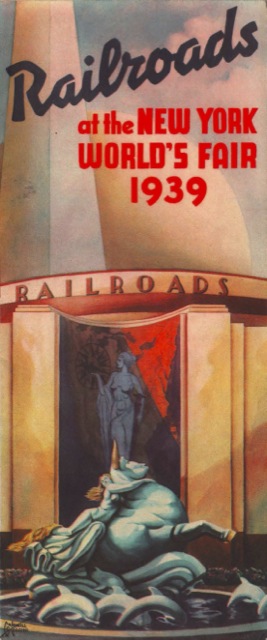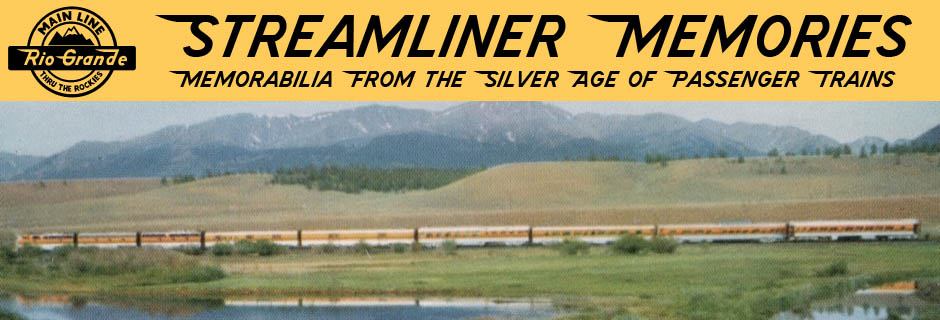Railroads exhibits occupied a large portion of the New York World’s Fair. This brochure, published by the Eastern Railroad President’s Conference, including a Railroads on Parade exhibit of historic locomotives in action, two large model railroads, and one of the largest steam locomotives ever built operating on rollers.

Click image to download a 3.0-MB PDF of this brochure.
The illustrations in the brochure were by Cardwell Higgins, a New Jersey artist who did pulp book covers, pin ups, and advertising. Among his advertising clients were Eastern Airlines, Mobil, and Paramount Pictures.

I listed this under PRR because I don’t have a general category and the locomotive illustrated in the brochure is a Pennsylvania S1, one of the longest steam locomotives ever built. In 1937, more than a decade had passed since Northern Pacific purchased the first 4-8-4 locomotive, and Pennsylvania–which called itself the Standard Railroad of the World–was the only major railroad in the country that didn’t have any 4-8-4s. Even though PRR had more than 300 4-8-2s, it apparently worried that a standard two-cylinder 4-8-4 would damage its roadbed. So it experimented with a duplex locomotive that used 4 cylinders to power eight driving wheels.

Click to download a 1.8-MB PDF of this Popular Mechanics article about the PRR S1 locomotive.
The result was the 6-4-4-6 S-1. Beautifully streamlined by Raymond Loewy, the locomotive was awed visitors to the 1939 fair, where PRR magnanimously lettered it “American Railroads” instead of “Pennsylvania.” After the fair, the locomotive proved to be fast, powerful, and a smooth runner. An assistant road foreman reported to Popular Mechanics that he had timed the locomotive going 133.4 mph over a 6-mile stretch, which was faster than the official recorded speed for any steam locomotive.
Yet the locomotive’s drawbacks proved fatal. The addition of two extra cylinders between the second and third driving wheels increased the locomotive’s wheelbase such that it could only be operated on the western end of the PRR. Also, the use of six-wheel leading and trailing trucks took so much weight off the drivers that it had problems with wheel slippage. Pennsylvania eventually built 75 4-4-4-4 T-1 locomotives, but killed the fires on the 6-4-4-6 S-1 in 1945 and scrapped it in 1949.
